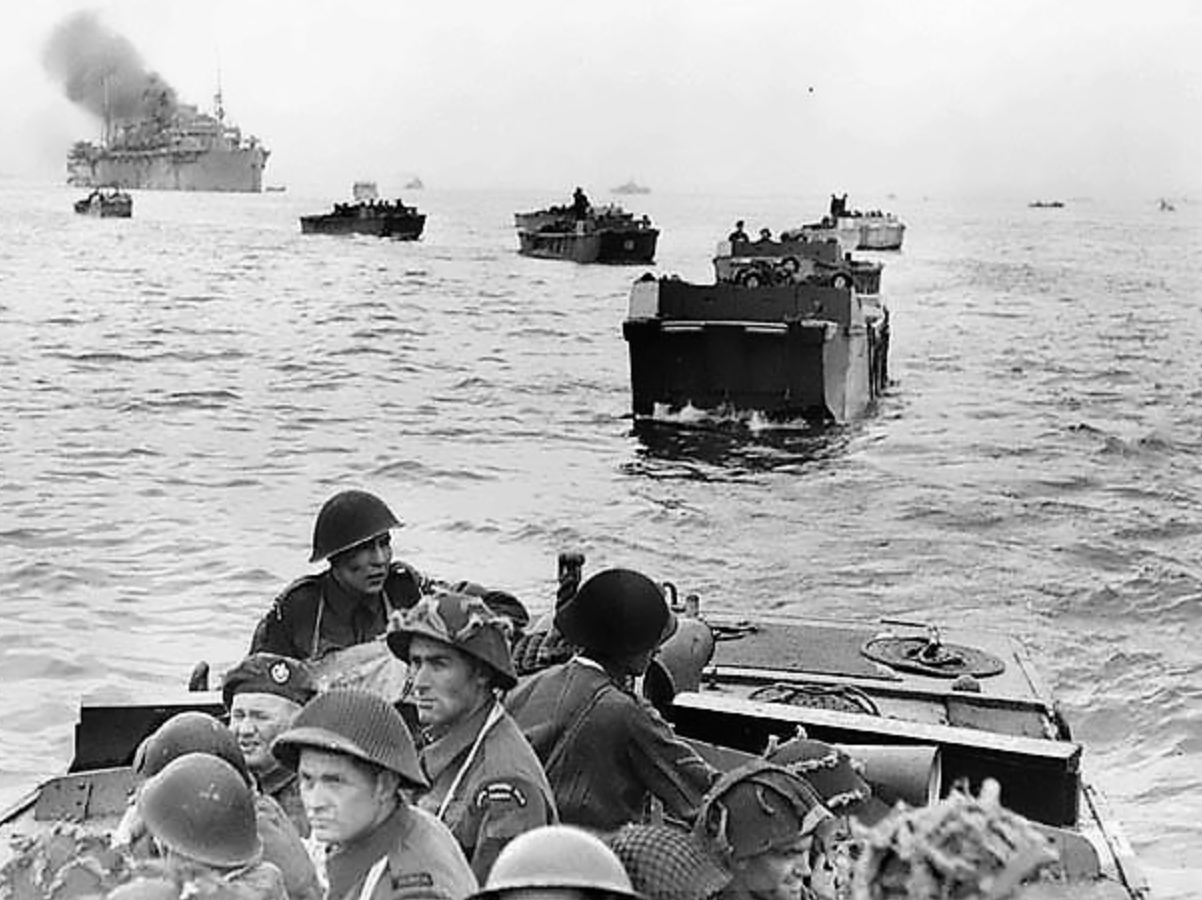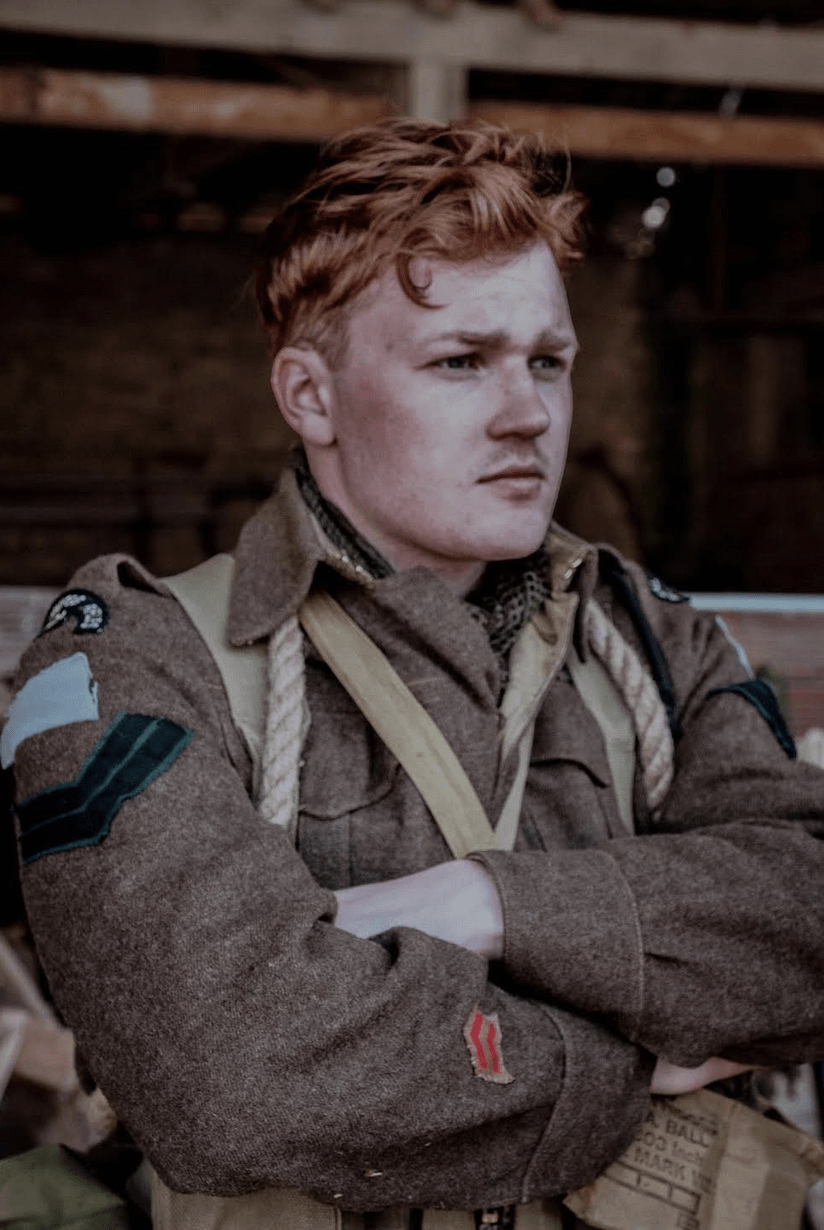From a Still-Grateful Normandy, a ‘Merci’ to ‘Les Canadiens’
 The Royal Winnipeg Rifles landing at Juno Beach on D-Day/LAC
The Royal Winnipeg Rifles landing at Juno Beach on D-Day/LAC
By Julien Martin-Kwiecien
May 31, 2024
In some parts of Europe, people can sometimes forget that the GIs were not the only North Americans to shed their blood on European soil to defeat Nazi Germany.
But here in Normandy, even after 80 years, we all remember what a generation of young Canadians — “les Canadiens” — did for our freedom and our future at the cost of their youth and their lives.
If you explore the Bessin (an area located between Bayeux and Caen, liberated village by village in June of 1944), you’ll see that not much of the landscape has changed since the war, but you’ll also see more Canadian flags flying than anywhere else in France, and probably many parts of Canada. The Normans are still, and will always be, grateful to our Canadian cousins, with whom we share so much history.
On D-Day, June 6, 1944, more than 14,000 Canadians landed in France, alongside the British, American, and Free French forces. Among them were the Royal Winnipeg Rifles – nicknamed the “Little Black Devils” by the Métis during the North West Rebellion 60 years earlier – a regiment from the plains of Manitoba yet to experience battle. The regiment was part of the 7th Canadian Infantry Brigade, 3rd Canadian Infantry Division. The 7th Brigade’s tasks were to land on the west end of Juno Beach, the landing beach assigned to the Canadians, between Graye-sur-Mer and Courseulles-sur-Mer, and to move 15 kilometers inland to reach the Oak Line, the railroad track that links Cherbourg to Paris.
The landing was a gruesome day for the RWR; a hundred men were either killed, wounded, or missing. The part of the beach where the regiment landed was well defended by the German defenders and almost unscattered by the previous allied bombings. But despite all these facts, the Manitoba boys managed to move deep inland, being the most advanced Allied unit in France on D-Day.
On the morning of June 7, 1944, the regiment reached the Oak Line and settled in the village of Putot-en-Bessin, just about 10 km away from Caen, the main objective of British and Canadian troops. In the meantime, the German forces sent their units as well to counterattack the Allies and push them back to the sea. One of these units was the 12. SS-Panzer-Division “Hitlerjugend,” an armored infantry unit of the Waffen-SS, the Nazi party’s combat branch. Like most of the 3rd Canadian Infantry Division members, they were also new to battle and eager to enter the fray.
On June 8, 1944, the Waffen SS launched their attack on the Winnipeg’s lines, and after hours of valiant but brutal and merciless hand-to-hand combat, the Canadians had to withdraw, suffering gigantic losses. Several hundred Canadians were killed, wounded, captured, and, for some, brutally murdered by the Waffen SS after being captured.

The author in a RWR uniform for his documentary
The idea for the movie Little Black Devils: From Juno to Putot was launched in the summer of 2021 by my dear late friend Frederick Jeanne, a local historian dedicated to the Commonwealth’s units engaged in the Battle of Normandy. The purpose of the film is to put testimonies into images as faithfully as possible for the younger Canadian and French generations in order to remember Canada’s sacrifice during the war, especially in this now-quiet and peaceful place called Normandy.
Since we are not in the movie industry, we had to learn everything about how to make movies. All the people that helped make this idea come true are regular people with a day- job and a life, spending countless days off, evenings, and weekends to achieve what we’ve done. We had a lot of support from the local museums here in Normandy, such as the D-Day Experience, the Overlord Museum, the Normandy Victory Museum, and La Batterie de Crisbecq. This resulted in more than 25 days of shooting, spread over two years (we initially thought we could do it with only 4 days), a professional film crew, hundreds of extras, and volunteers.
Last but not least, our biggest supporters in Canada are Jim Parks, the last veteran of the Royal Winnipeg Rifles, and Rob Cullen, the son of a Royal Canadian Artillery gunner who landed in Normandy not far away from Jim Parks on D-Day. Mr. Parks and Mr. Cullen have generously shared with us their firsthand experience and bequeathed knowledge of the events that began on D-Day.
As someone working in a museum (the D-Day Experience, located in Saint-Côme-du-Mont, it is dedicated to the American airborne troops), it is a very unique feeling to live and work in such historical places. When you are a history enthusiast like I am, it truly is like a blessing. The 80th anniversary will be the last “big” anniversary where we will have the opportunity to meet and thank the last members of the Greatest Generation, the generation that sacrificed so much for us. Including thousands of brave Canadians, remembered here in Normandy as if D-Day was just yesterday.
Julien Martin-Kwiecien is a French citizen who lives in Carentan-les-Marais, Normandy, and works at the D-Day Experience museum in Saint-Côme-du-Mont.
